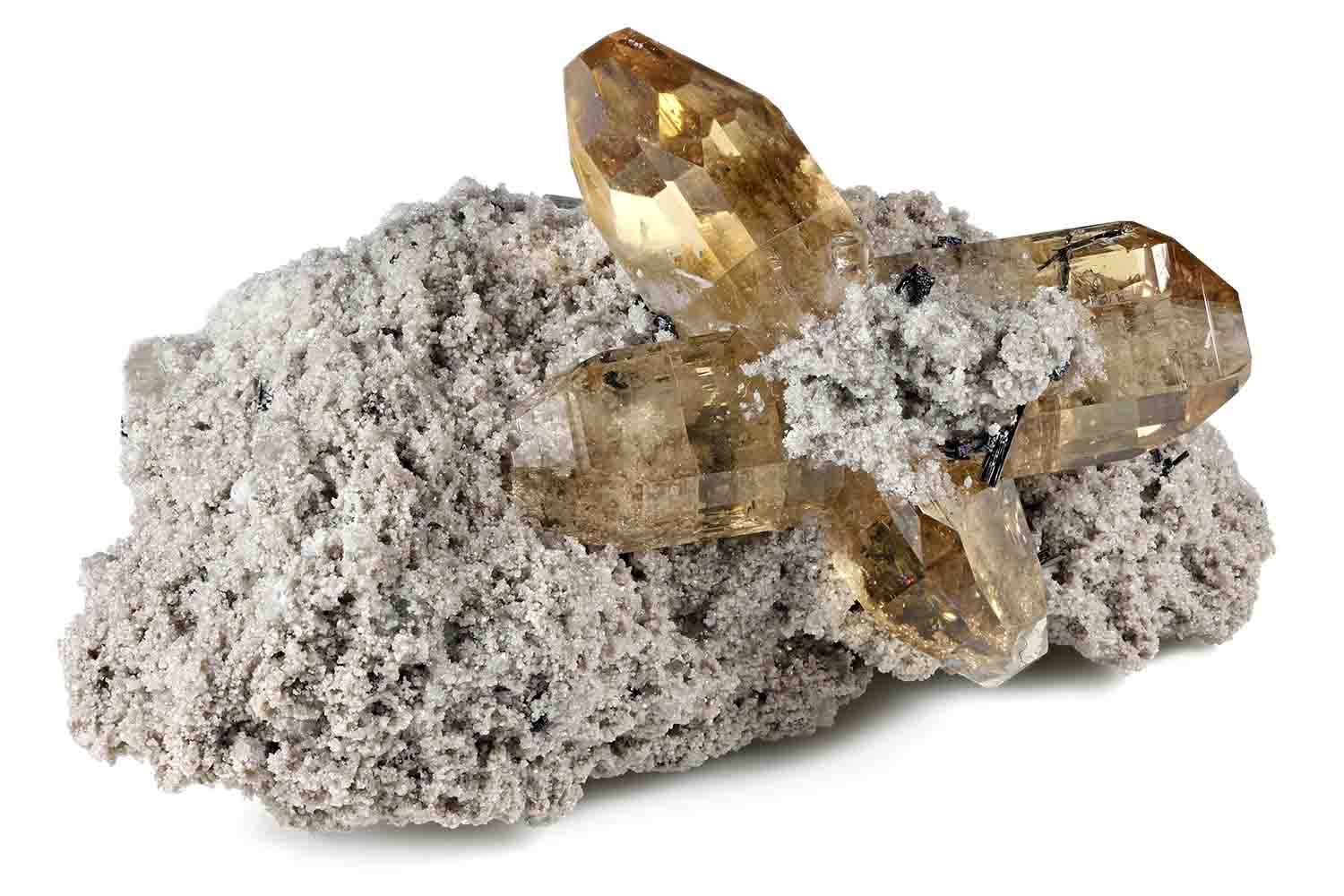Topaz
About Topaz
The Topaz became the State Gem in 1969 (Utah Code). Sponsored by Representative Frank V. Nelson (Salt Lake City-R), HB 6 was signed into law on February 6, 1969 by Governor Calvin L. Rampton.
Enactment of the bill was encouraged by Utah’s gem and mineral societies. The National Convention and Show of the American Federation of Mineralogical Societies was held in the Salt Palace in June 1969. They planned field trips to Topaz Mountain for convention visitors who want to collect the state gem.
Topaz is a semiprecious gem or gemstone found in Beaver, Juab and Tooele counties of Utah. Small perfect crystals are found with quartz, hematite, bixbyite, garnet, pseudobrookite, amethyst, cristobalite, durangite, cassiterite and red beryl in cavities in rhyolite on Thomas Mountain, Juab County.
This hard gem is an aluminum fluorisilicate and is next in hardness to carborundum and diamonds (two of the hardest natural minerals around). Until the 1950s, topaz was generally known as a yellow or golden gemstone. Since then, routine radiation and heat treatment of pale-colored topaz to turn it blue has changed the modern public’s perception of this gem. Constructed of atoms of aluminum, silicon, fluorine, and oxygen, topaz usually is colorless to pale blue or yellow — although pink stones can be produced by heating the golden brown topaz from Ouro Preto, Brazil. Now colors include pale blue, pale green, yellow, sherry orange, pink, and, rarely, red.
Thomas Range topaz obtained their color from natural radiation during their formation in vent pipes which trapped volatile gases in cavities within the host rhyolites. When unearthed they glow with a vibrant sherry color and with exposure to direct sunlight for a while will generally turn clear. The sunlight (also UV radiation) reacts with the color centers in the topaz crystal structure displacing electrons which in turn change the color. However, some locations do produce topaz that fade to a beautiful pink color. Some topaz are “tougher” than others and do not have as weak a cleavage plane as the Thomas Range topaz which usually they cleave with a flat top. A favorite location for the mineral collectors and rockhounds is called “The Cove” on the southern end of the Thomas Range.
Wear topaz only if you wish to be clear-sighted: legend has it that it dispels all enchantment and helps to improve eyesight as well! The ancient Greeks believed that it had the power to increase strength and make its wearer invisible in times of emergency. Topaz was also said to change color in the presence of poisoned food or drink. Its mystical curative powers waxed and waned with the phases of the moon: it was said to cure insomnia, asthma, and hemorrhages. Topaz is the birthstone of November.
